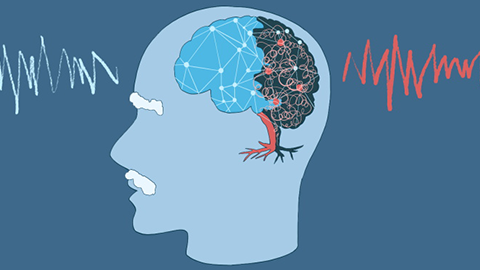How is cerebral hematoma caused?
Generally, cerebral hemorrhage may be caused by factors such as aging, unhealthy lifestyle habits, cerebrovascular malformations, hypertension, and rupture of cerebral aneurysms. Depending on the specific situation, treatment options may include conservative management, medication, or surgical intervention to treat or alleviate the condition. It is recommended to seek timely medical attention and undergo symptomatic treatment under a doctor's guidance after the underlying cause has been clearly identified. Detailed analysis is as follows:

1. Aging: With advancing age, blood vessel walls gradually lose their elasticity, thereby increasing the risk of cerebral hemorrhage. This typically does not present with obvious symptoms but may indirectly lead to cerebral hemorrhage by affecting vascular health. Adopting a healthy lifestyle, such as engaging in moderate exercise and maintaining a balanced diet, may help delay disease progression.
2. Unhealthy lifestyle habits: Long-term sleep deprivation, excessive fatigue, and significant emotional fluctuations may lead to elevated blood pressure, thereby increasing the risk of cerebral hemorrhage, which may manifest as symptoms such as headache and dizziness. Improving lifestyle habits, ensuring adequate sleep and rest, and avoiding excessive fatigue and emotional fluctuations are recommended.
3. Cerebrovascular malformations: Cerebrovascular malformations refer to congenital abnormalities of blood vessels in the brain, such as arteriovenous malformations, which can easily cause cerebral hemorrhage and may be accompanied by symptoms such as headache and epileptic seizures. Patients may, under a doctor's guidance, undergo microsurgical procedures, endovascular interventions, or radiation therapy.
4. Hypertension: This may be associated with genetic factors and unhealthy lifestyle habits. Long-term hypertension can cause damage to the walls of cerebral blood vessels, increasing the risk of cerebral hemorrhage, which may be accompanied by symptoms such as headache and dizziness. Patients may follow medical advice to use medications such as nifedipine tablets, methyldopa tablets, or captopril sustained-release tablets.
5. Ruptured cerebral aneurysm: A cerebral aneurysm refers to an abnormal bulge in the wall of a blood vessel in the brain. Once ruptured, it can cause cerebral hemorrhage, possibly accompanied by severe headache, nausea, and vomiting. Patients may follow medical advice to undergo aneurysm clipping surgery or endovascular embolization.
In daily life, it is important to actively prevent and control the above risk factors to reduce the risk of cerebral hemorrhage.





